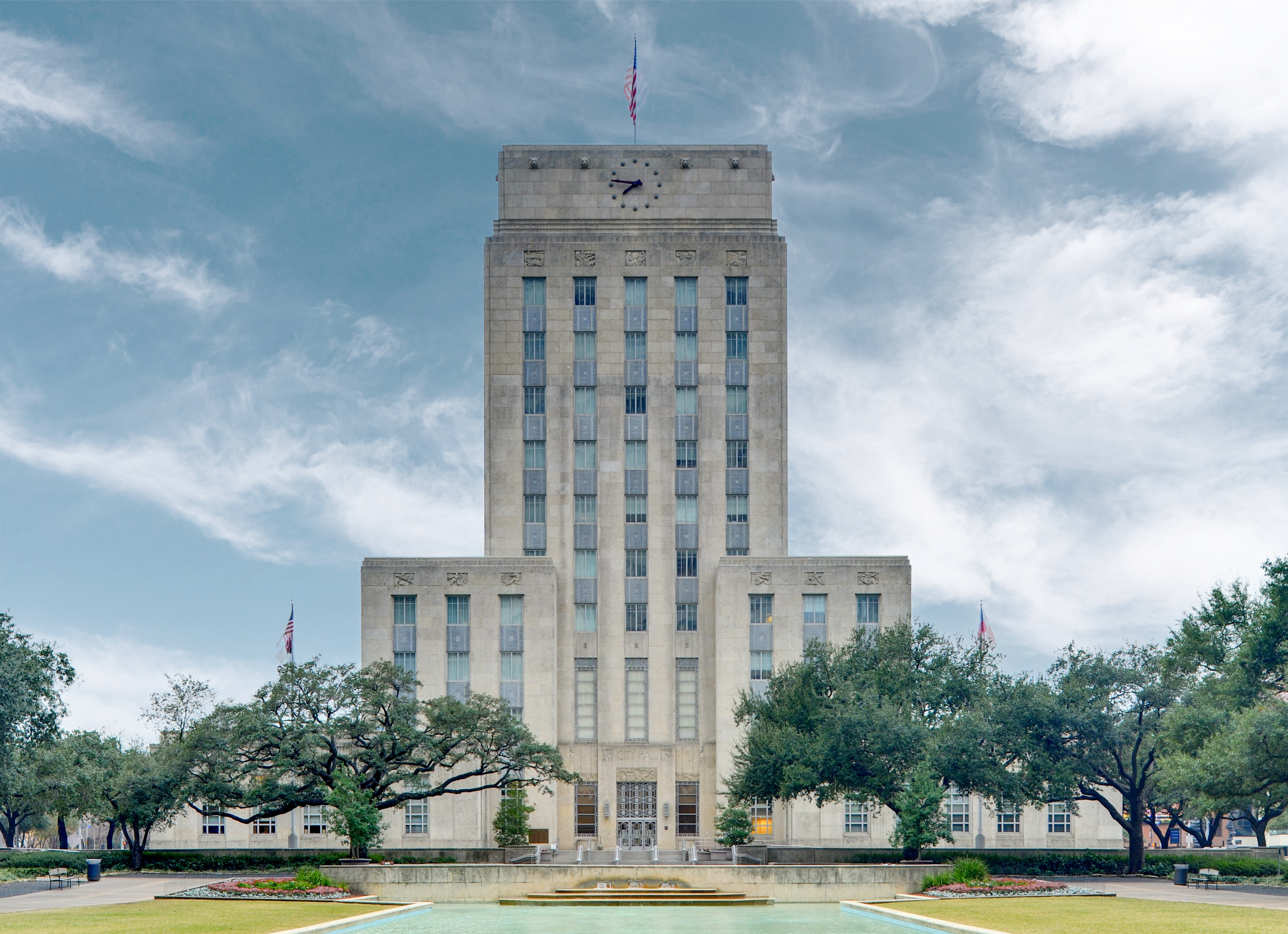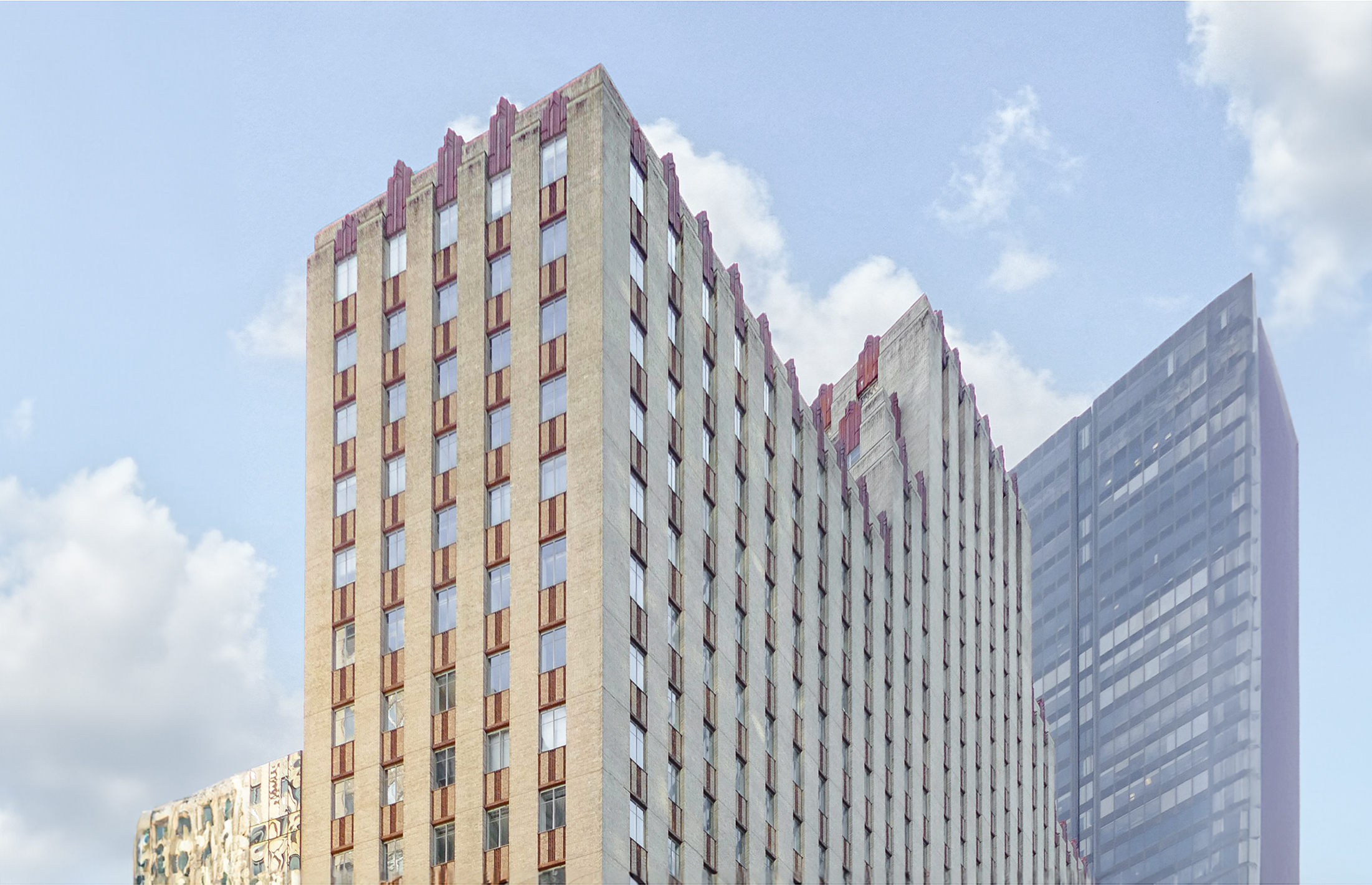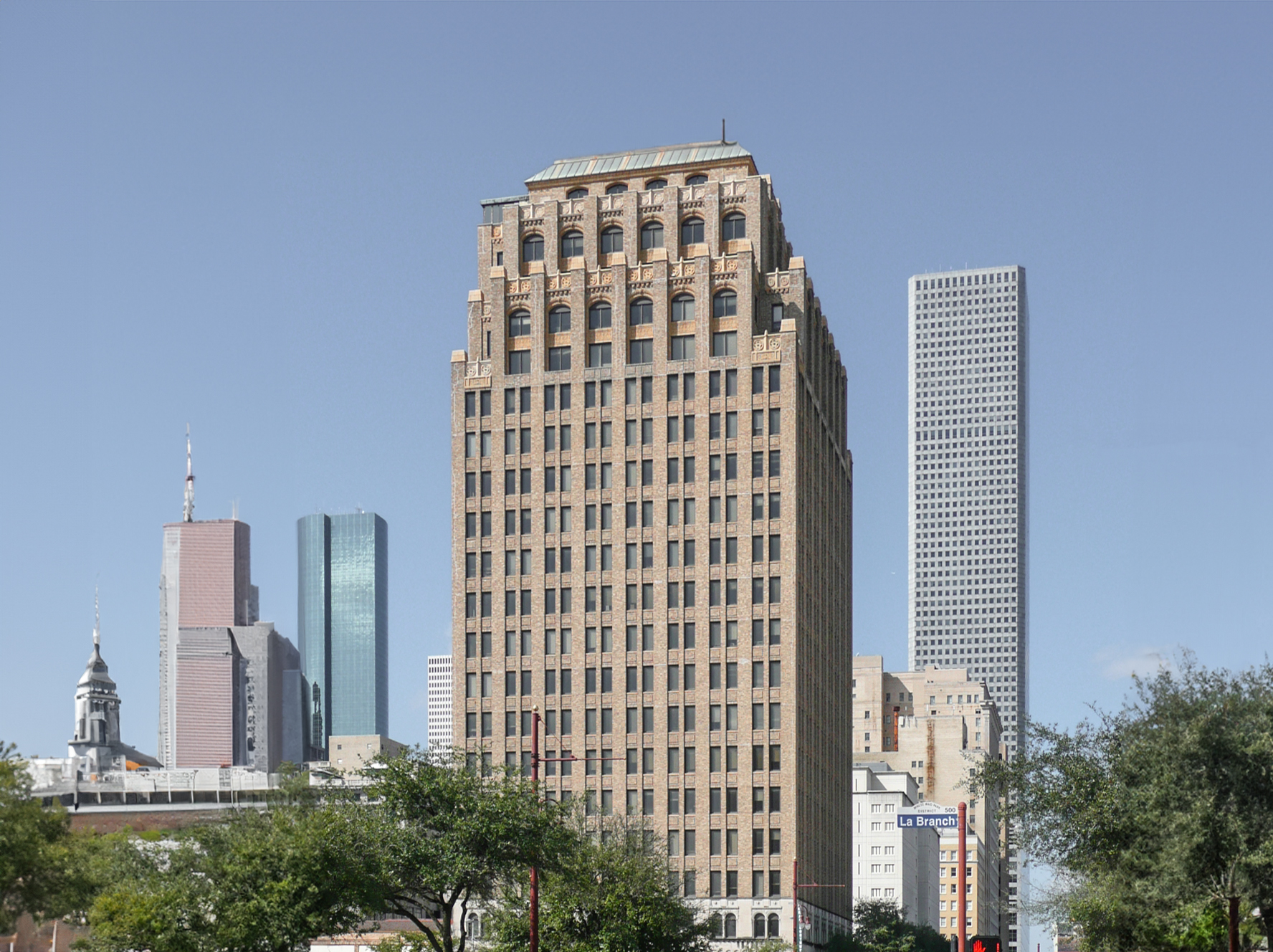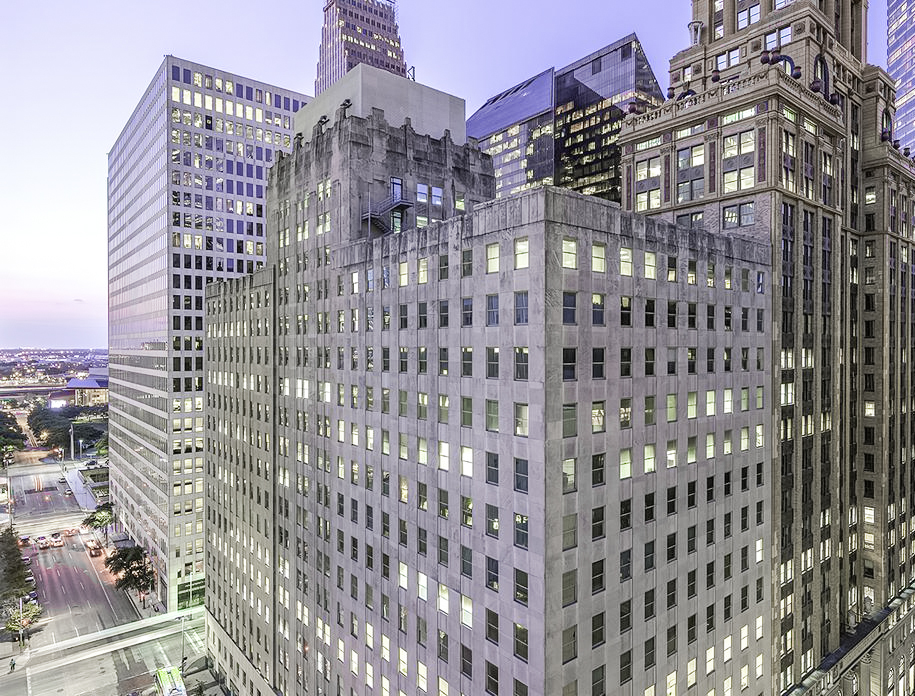The Houston City Hall is an Art-deco skyscraper designed in 1937 by Joseph Finger, and built between 1938 and 1939, for a reported $1.67 million dollars, in Houston, TX.
Its precise street address is 901 Bagby, Houston, TX. You can also find it on the map here.
The Houston City Hall is a structure of significant importance both for the city of Houston and the United States as a nation. The building embodies the distinctive characteristic features of the time in which it was built and the Art Deco style. Because of that, the Houston City Hall was officially included in the National Register of Historic Places on September 18th 1990.
At the time of its completion in 1939 the Houston City Hall incorporated solutions that were quite advanced at the time, these included being one of the first totally air-conditioned office buildings in Houston.




